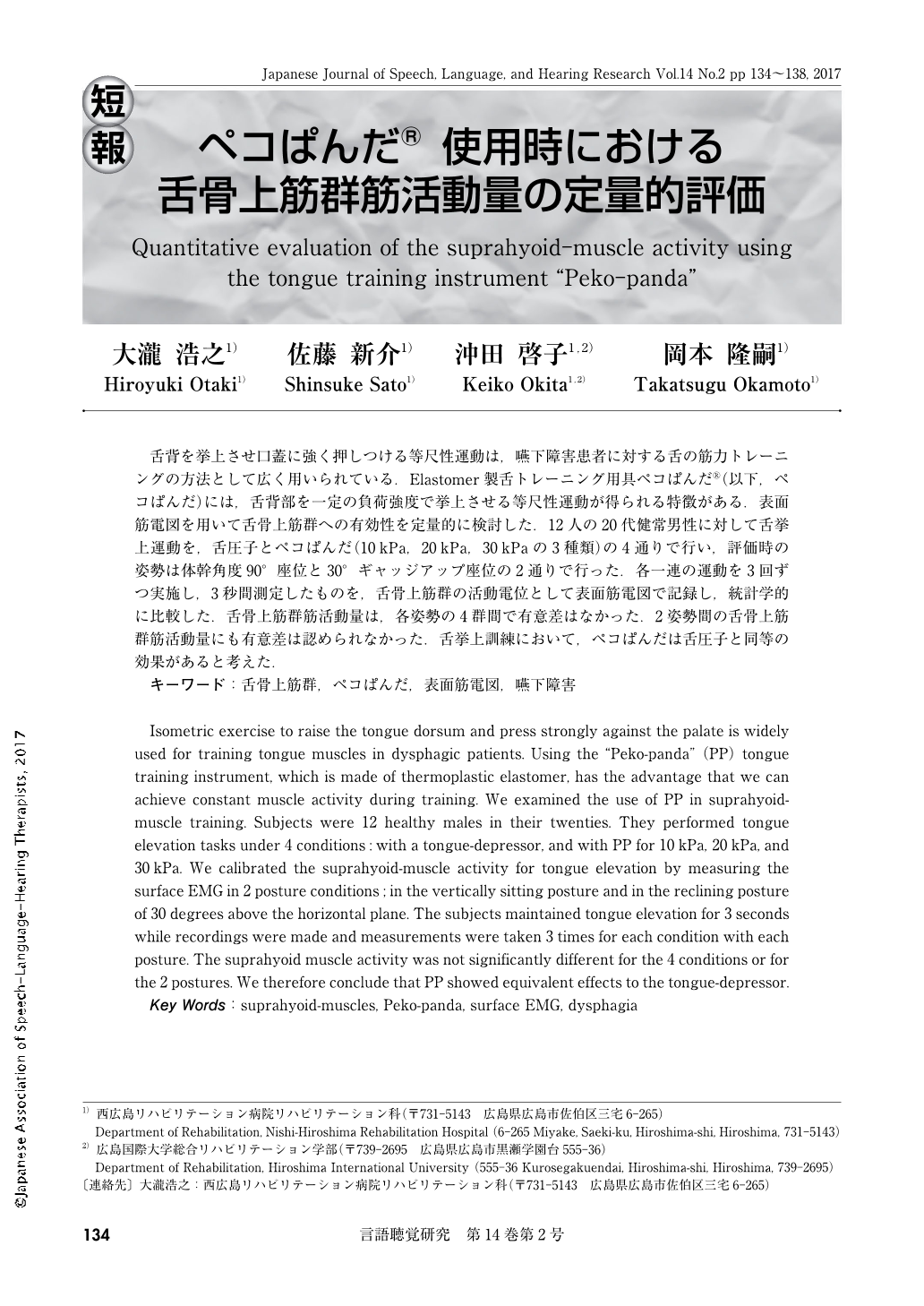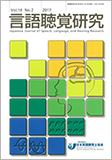Japanese
English
- 有料閲覧
- Abstract 文献概要
- 1ページ目 Look Inside
- 参考文献 Reference
- サイト内被引用 Cited by
舌背を挙上させ口蓋に強く押しつける等尺性運動は,嚥下障害患者に対する舌の筋力トレーニングの方法として広く用いられている.Elastomer製舌トレーニング用具ペコぱんだ®(以下,ペコぱんだ)には,舌背部を一定の負荷強度で挙上させる等尺性運動が得られる特徴がある.表面筋電図を用いて舌骨上筋群への有効性を定量的に検討した.12人の20代健常男性に対して舌挙上運動を,舌圧子とペコぱんだ(10kPa,20kPa,30kPaの3種類)の4通りで行い,評価時の姿勢は体幹角度90°座位と30°ギャッジアップ座位の2通りで行った.各一連の運動を3回ずつ実施し,3秒間測定したものを,舌骨上筋群の活動電位として表面筋電図で記録し,統計学的に比較した.舌骨上筋群筋活動量は,各姿勢の4群間で有意差はなかった.2姿勢間の舌骨上筋群筋活動量にも有意差は認められなかった.舌挙上訓練において,ペコぱんだは舌圧子と同等の効果があると考えた.
Isometric exercise to raise the tongue dorsum and press strongly against the palate is widely used for training tongue muscles in dysphagic patients. Using the "Peko-panda"(PP) tongue training instrument, which is made of thermoplastic elastomer, has the advantage that we can achieve constant muscle activity during training. We examined the use of PP in suprahyoid-muscle training. Subjects were 12 healthy males in their twenties. They performed tongue elevation tasks under 4 conditions:with a tongue-depressor, and with PP for 10kPa, 20kPa, and 30kPa. We calibrated the suprahyoid-muscle activity for tongue elevation by measuring the surface EMG in 2 posture conditions;in the vertically sitting posture and in the reclining posture of 30 degrees above the horizontal plane. The subjects maintained tongue elevation for 3 seconds while recordings were made and measurements were taken 3 times for each condition with each posture. The suprahyoid muscle activity was not significantly different for the 4 conditions or for the 2 postures. We therefore conclude that PP showed equivalent effects to the tongue-depressor.

Copyright © 2017, Japanese Association of Speech-Language-Hearing Therapists. All rights reserved.


